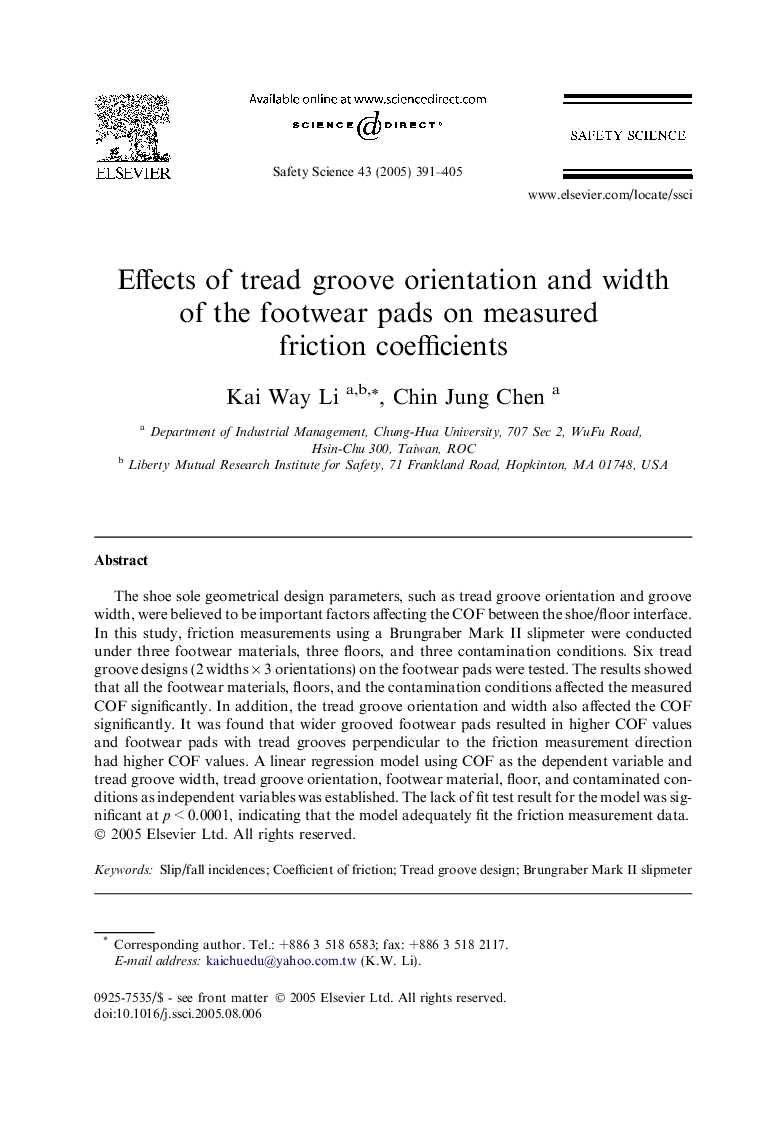| Article ID | Journal | Published Year | Pages | File Type |
|---|---|---|---|---|
| 10374361 | Safety Science | 2005 | 15 Pages |
Abstract
The shoe sole geometrical design parameters, such as tread groove orientation and groove width, were believed to be important factors affecting the COF between the shoe/floor interface. In this study, friction measurements using a Brungraber Mark II slipmeter were conducted under three footwear materials, three floors, and three contamination conditions. Six tread groove designs (2 widths Ã 3 orientations) on the footwear pads were tested. The results showed that all the footwear materials, floors, and the contamination conditions affected the measured COF significantly. In addition, the tread groove orientation and width also affected the COF significantly. It was found that wider grooved footwear pads resulted in higher COF values and footwear pads with tread grooves perpendicular to the friction measurement direction had higher COF values. A linear regression model using COF as the dependent variable and tread groove width, tread groove orientation, footwear material, floor, and contaminated conditions as independent variables was established. The lack of fit test result for the model was significant at p < 0.0001, indicating that the model adequately fit the friction measurement data.
Keywords
Related Topics
Physical Sciences and Engineering
Chemical Engineering
Chemical Health and Safety
Authors
Kai Way Li, Chin Jung Chen,
